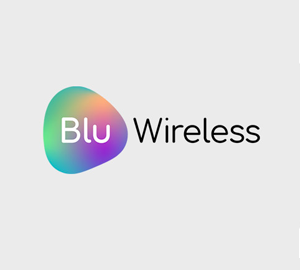Unique heterogeneous processing architecture provides highly efficient baseband processing
Imagination Technologies (IMG.L) and Blu Wireless Technology (BWT) are sharing details of Blu Wireless’s new HYDRA baseband technology for efficient multi-gigabit wireless processing. The ground-breaking technology leverages multiple MIPS Aptiv processors together with HYDRA vector DSP technology in a unique heterogeneous multiprocessing architecture targeting the burgeoning 60GHz space.
The 60GHz market is being driven by consumer demand for HD video ‘anywhere, anytime’ via smartphones, laptops and tablets. 802.11ad Wi-Fi (also called WiGig), which uses the 60GHz band, is now hitting the market and is capable of delivering more than 20 times the speed of existing Wi-Fi. This enables the near instantaneous sharing of large HD video files between devices and also supports low latency wireless streaming of video and gaming content to large HDTVs.
BWT intends to be a major supplier of technology to this market, which is forecast to be worth over $5B per annum by 2018*. 4G basestation companies are also planning to use the 60GHz band for high-speed unlicensed wireless links between small cells that can be mounted on street furniture such as signs, benches and streetlamps. The demand for these small cells is being driven by the same consumer demand for mobile video and is forecast to be worth over $3B per annum by 2018**.
With its high-performance, power-efficient design, the MIPS architecture has long been known as the architecture of choice for communication networks. The MIPS microAptiv CPU is particularly well suited to deeply embedded multi-core designs such as the HYDRA WiGig baseband processor, where the combination of a tightly coupled co-processor interface with customised co-processor instructions provides an efficient route to extended designs. Alongside this exists a mature software development and debugging environment for extended multicore processors.
Says Mark Barrett CMO, Blu Wireless Technology: “We surveyed the market and determined that MIPS Aptiv cores were the best possible processors for our application. MIPS microAptiv provides a compelling combination of co-processor support, multi-core debug and mature software tools for our HYDRA architecture. Coupled with the strength of MIPS in the communications market and Imagination’s Ensigma portfolio of IP for the existing Wi-Fi market, we are excited by the opportunity of working with Imagination.”
Says Tony King Smith, EVP marketing, Imagination: “We’re delighted that BWT has chosen to use our popular MIPS microAptiv cores in its innovative new design. With its clean, efficient architecture, MIPS is an ideal fit for the demands of high-performance deeply embedded communications applications. Imagination has been impressed by the innovative approach that BWT have taken to tackling the challenges of multi-gigabit wireless processing. We believe that BWT has a compelling solution, and we look forward to working closely with them in the future.”
Unique heterogeneous processing architecture
HYDRA baseband technology utilises a heterogeneous multiprocessing architecture, mixing fixed-function DSP blocks in a highly optimised parallel vector data plane. BWT is implementing a multicore arrangement of MIPS microAptiv processors to provide a mature software development platform for the control plane, delivering configurable co-processor instructions deep into the HYDRA baseband data plane. This combination of multicore MIPS and HYDRA vector DSP provides a mature software development, debugging and traceability of dataflow in the high speed data plane.
BWT is also leveraging a MIPS CPU for control of its optimized MAC datapath, providing acceleration of lower MAC layer processing for customer-driven expansion features. The multi-threading within the MIPS interAptiv core enables better overall throughput, quality of service (QoS), and power/performance efficiency.
About HYDRA technology
The HYDRA gigabit PHY and MAC baseband provides a cost effective yet flexible baseband IP solution for applications such as WiGig, IEEE 802.11ad and gigabit millimetre wave backhaul and fronthaul. In addition to its flexibility and efficiency the modular parallel architecture of the HYDRA can be simply scaled to support implementations ranging from its current specification of 2 to 7Gbps, to 20Gbps and beyond.
BWT is already working with lead customers of its HYDRA System IP and a hardware evaluation platform will be available in Q2 2014.
Editor Notes:
* Industry analyst estimates, 2013
** Infonetics Research, March 2013









